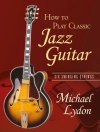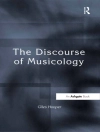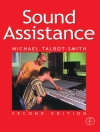This book sets out to build on the initial aspects of singing at sight in reading both the rhythm and pitch accurately, as begun in Sight-Singing 1.
Sight-Singing 2 is divided into two parts. Part 1 comprises 95 exercises in either single or 2-part form. These cover methods to secure the line of the pitch, sequences, singing a lower part, ties, awareness of chord structure, canons, chromatic movement, modulations and tone rows. A section of 2-part exercises is also included using treble and bass clefs.
Part 2 consists of 16 solo pieces which are presented in the treble clef, and aim to develop the singer’s ability to pitch independently from their accompaniment. These short pieces are based on chords, intervals, the Dorian mode, pentatonic scales, melodic minor scales, chromatic movement and changing time signatures.
The aim of this volume is to develop a secure sense of pitch, providing a comprehensive range of styles and challenges which will be of value not just to singers but to all dedicated musicians. The skill of being able to ‘vocalise’ a melody independently and accurately is a valuable asset for all musicians regardless of vocal ability or instrument played. The ability to ‘hear’ a phrase before it is sung or played is especially useful.
– 95 solo/2-part exercises
– 16 accompanied solos
– 1 wide range of challenging styles
– valuable both to singers and instrumentalists
Inhoudsopgave
Part 1: 1. Security of pitch – 2. Sequences – 3. Lower (alto) line – 4. Semiquavers – 5. Two-part exercises – ties and suspensions – 6. Chordal awareness – 7. Modulations – 8. Two-part exercises using treble and bass clefs – 9. Two-part exercises – chords and chromatics – 10. Two-part exercises – canon – 11. Tone rows – Part 2: 1. Tonic and dominant triads (major) – 2. Tonic and dominant triads minor) – 3. Triads of I, II and V – 4. Triads of I, IV and V – 5. Intervals of 6th, 7th and 8ve – 6. Chords I and II with sequences – 7. Dorian mode – 8. Pentatonic scale – 9. Melodic minor scale – 10. Chromatic scale (descending) – 11. Melody below accompaniment – 12. Syncopation – 13. Independence from accompaniment – 14. Time changes in 2/2, 3/2 and 4/2 – 15. Time changes in 5/4 – 16. Further chromaticism
Over de auteur
John Kember studied at Trinity College of Music, London and has enjoyed a varied career in both performing and academic spheres, ranging from teaching in schools and privately, to working as composer, arranger, pianist and conductor in Concert Halls, theatres and recording studios. Currently John is working on a number of new and exciting projects for both publication and performance. He has a busy private teaching practice in south east London and teaches for Kent Music School and the Kent Centre for Young Instrumentalists in Maidstone. John was an examiner for the Associated Board of the Royal Schools of Music from 1989 until 2005












